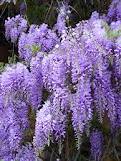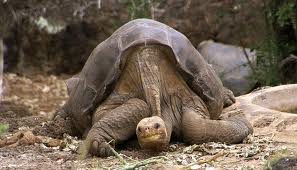Lightning may be thought of as a huge spark of electricity. During a thunderstorm, very large electric charges build up insides the clouds and on the ground. The charges build up insides the clouds and on the ground.
The charges build up until a flash of lightning shoots through the air between them. Lightning can flash from the cloud to the ground or between two clouds. Lightning is a sequence of flashes. First a main stroke zigzags to the ground. The main flash then surges upwards. Other flashes may follow in quick succession. When the lightning discharges its electricity to Earth, it tends to strike at a high point, such as a mountain, a tree or a tall building. Lightning flashes produces about 100 million volts of electricity.
❥SCIENCE WORLD❥
GAN AI MEI ✩ D20102044710 ❥EL-N04♥
Thursday, December 1, 2011
How do Magnetic trains work?
Magnetic trains work on the principle of magnetic levitation, which is a way of lifting objects by using the forces that keep magnets apart. This makes the train float above their tracks.
The magnetic train carries powerful linear motors which push against magnets laid in the special track. The magnets in the track first attract the train, pulling it forward and then, when magnetic fields is reserved. repelling the train and pushing it forward even faster. The train and the track do not touch each other. There are no moving parts, such as wheels and, hence, there is no friction between the train and the track.
The magnetic train carries powerful linear motors which push against magnets laid in the special track. The magnets in the track first attract the train, pulling it forward and then, when magnetic fields is reserved. repelling the train and pushing it forward even faster. The train and the track do not touch each other. There are no moving parts, such as wheels and, hence, there is no friction between the train and the track.
Which are the largest and smallest flowering plants?
Chinese Wisteria is the world's largest flowering plant. it can grow branches over 150 metres long and can produce about one and a half million flowers each year.
Bolivian bromeliad ( Puyaraymondii) is another large plant, whose spike reaches a height of ten metres with 8000 flowers on it.
Wolffia punctata, a duckweed, is the smallest flowering plant. It floats on water and forms large floating masses on ponds. It is a very small plant and has one or two disc-like leaves and hanging roots. The smallest plant can measure half a millimetre across.
Which are the longest living animals?
The animals with the longest life span in the whole animals kingdom is the tortoise. Tortoise are known to live for 150-200 years.
How do snails get their shells?
Snail are soft bodied animals and this makes them vulnerable. They belong to a group known as molluscs, which in Latin means soft. These animals protect themselves by forming a shell made of calcium carbonate, which is extracted from the soil and the food they feed on. Younger snails have smaller, nearly transparent shells that grow larger and stronger as the snail matures.
Saturday, November 26, 2011
Do vampire suck blood?
Vampire bats are depicted as huge creatures in horror films. Though, these mammals feed on the blood of other mammals including man, they are very small in sizes, not more than six to nine centimetres in length. The vampire bats are found only in Central and South America.
They feed at night and suck the blood of horse and cattle. When the prey is fast asleep, it cuts away a small piece of skin with its razor-sharp teeth, usually on the neck or leg of the animal. its saliva contain a chemical that stops the blood from clotting. It when sucks up the blood oozing out from the wound.
They feed at night and suck the blood of horse and cattle. When the prey is fast asleep, it cuts away a small piece of skin with its razor-sharp teeth, usually on the neck or leg of the animal. its saliva contain a chemical that stops the blood from clotting. It when sucks up the blood oozing out from the wound.
Why is hump important for camel?
Also known as the ship of the desert, camels can live without food and water for days together. This is the reason why camels have been used for travelling in desert since times immemorial. Before starting a long journey, a camel takes in large quantities of water and food. the water is stored in water pouches in its stomach, while the food is stored as fat in its hump. It is because of this hump that a camel can survive in the dry and harsh desert. All these days, the camel's body survives on this reserved fat and provides energy to the animal. after a long journey, the hump gets loosened. The camel rests for a long time; has its intake of food and water and sets out for another journey.
Subscribe to:
Posts (Atom)














